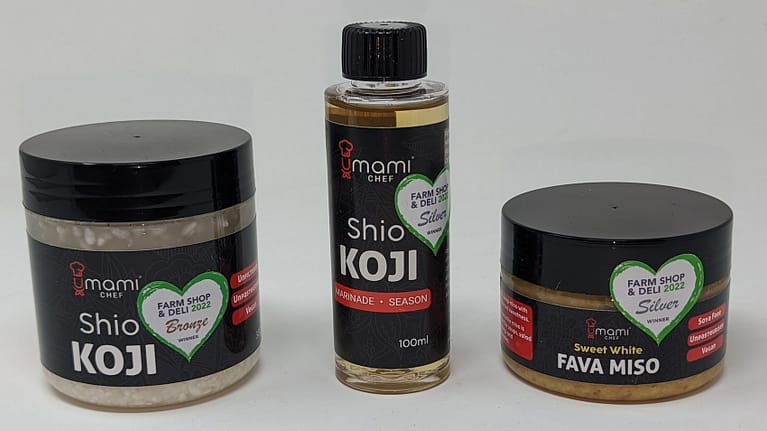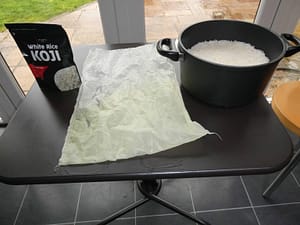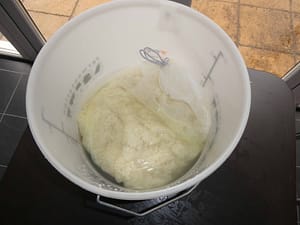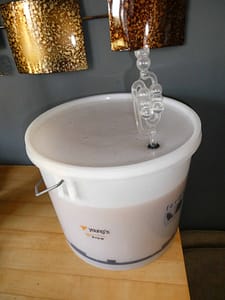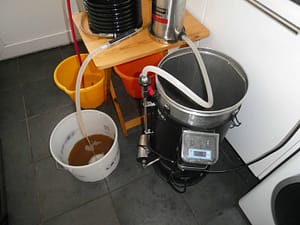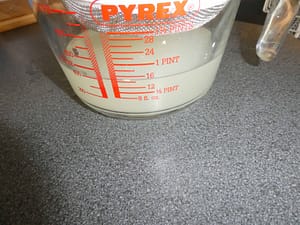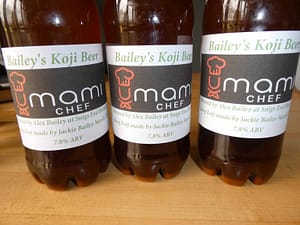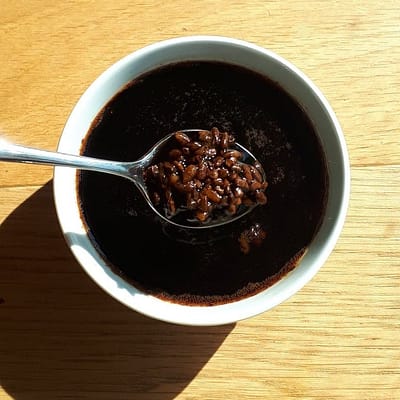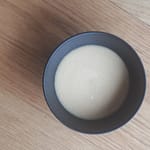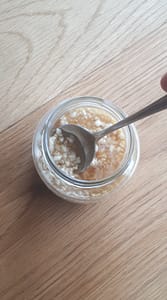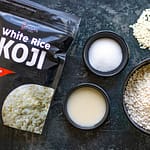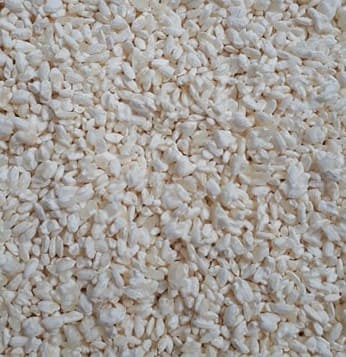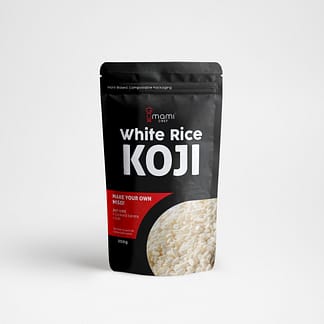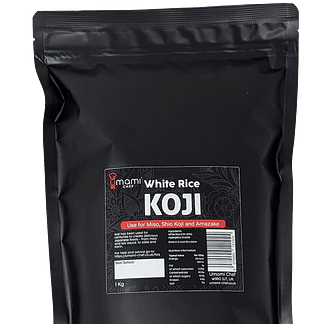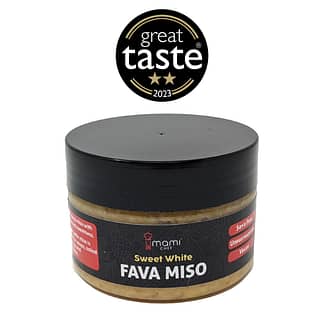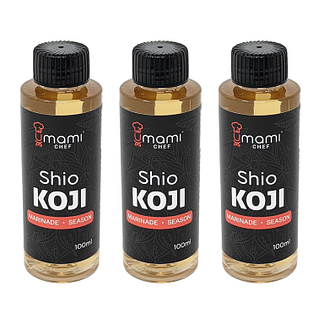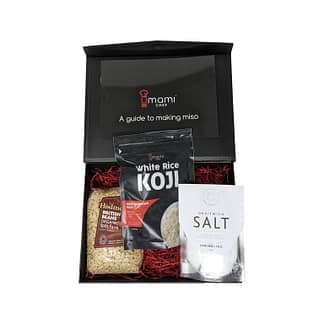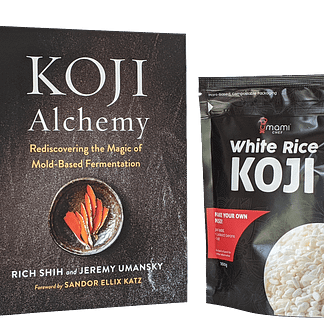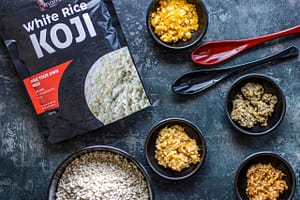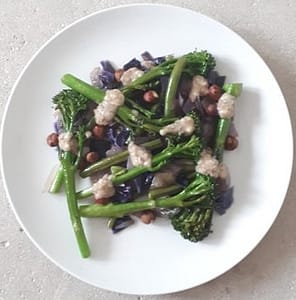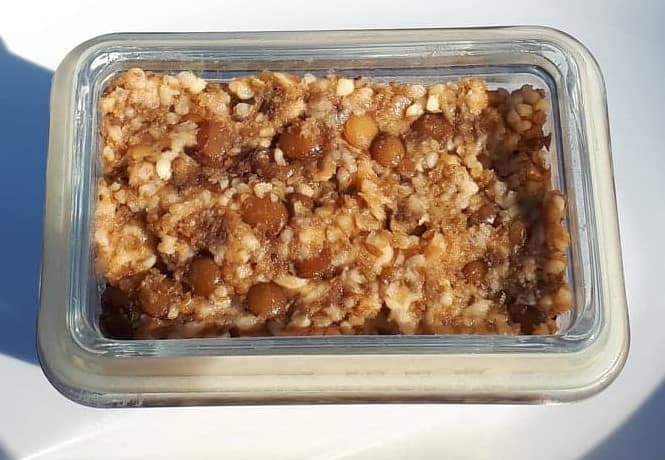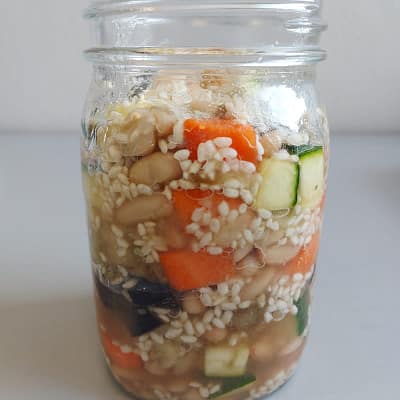
Kinzanji miso is different to most other misos in that it is not used as a seasoning, but is designed to be eaten as a side dish. It is made by fermenting vegetables with koji to create a dish that is sweet and sour – the perfect accompaniment to most Japanese dishes. It is also frequently used as the Japanese equivalent of sofrito or mirepoix – saving the time needed to fry the vegetables used in the base of dishes.
Very little information about kinzanji miso is available in English, so I’ve researched Japanese texts to discover everything I can about this dish.
Traditionally kinzanji miso is made using a combination of three kojis – rice, soy and barley – all in equal proportions. The other ingredients are harder to tie down – it’s the sort of dish where every family seem to have their own version. The common themes are that they have 6% salt (5.8% according to the Standard Food Composition Table of Japan) and an equal amount of sugar. Most recipes also call for double this percentage in honey, although if you’re not a fan of sweet dishes, or looking to create a vegan version, this can be left out.
Another ingredient that is in almost all versions is ginger, although the amount varies wildly – some contain a tablespoon, whilst one recipe I found had 1.5Kg of ginger in a 7kg recipe! In the recipe below I’ve used a more moderate amount of ginger, but feel free to increase this if you’re a big ginger fan.
The vegetables used also vary – aubergine, daikon radish, courgettes, melons, burdock root, shiso leaves and various seaweeds are the most commonly mentioned, but modern recipes also tend to include carrots, peppers and garlic.
Some recipes also called for the addition of sake, mirin or soy sauce, but mostly in very small amounts. I’ve chosen to leave these out as they didn’t appear in the older recipes I found; but feel free to experiment by adding them to your dishes.
Note: I’m unable to eat soy or wheat so have created a recipe to avoid these ingredients. If you’re looking to make a traditional version, replace the rice koji and beans in the recipe below with a mix of rice koji, soy koji and barley koji.
Kinzanji Miso
Kinzanji miso is different to most other misos in that it is not used as a seasoning, but is designed to be eaten as a side dish. It is made by fermenting vegetables with koji to create a dish that is sweet and sour – the perfect accompaniment to most Japanese dishes.
Prep Time20 minutes mins
Fermentation Time30 days d
Course: Side Dish
Cuisine: Japanese
Keyword: fermented, Koji, miso
Servings: 24
Cost: £10
- 1 packet Umami Chef Rice Koji (200g) For authentic kinzanji miso replace the koji rice and cannellini beans in this recipe with 400g of mixed rice, soy and barley koji)
- 60 g salt
- 60 g sugar
- 100 g honey
- 150 g aubergine cubed and steamed
- 100 g courgette cubed
- 150 g carrot cubed
- 1 tbsp ginger minced/grated
- 200 g cannellini beans cooked
Mix all the ingredients together, then pack into a jar.
Over the next few hours the vegetables will begin to release moisture, press the vegetables down until this liquid covers all the ingredients.
You now have a choice. You can either place a weight on top of the mixture, to keep all the ingredients submerged. Or you can stir it once a day, to prevent mold growth on the surface.
Cover with a cloth to prevent insects from entering. Then leave the miso at room temperature to ferment. In a hot room/airing cupboard (25'C) this might be as little as 3 weeks. In a colder room (15'C) this might be 8 weeks. It is edible throughout, so just taste and when you like it place in the fridge to stop the fermentation. Enjoy!
Note: I’m unable to eat soy or wheat so have created a recipe to avoid these ingredients. If you’re looking to make a traditional version, replace the rice koji and beans in the recipe with a mix of rice koji, soy koji and barley koji.
